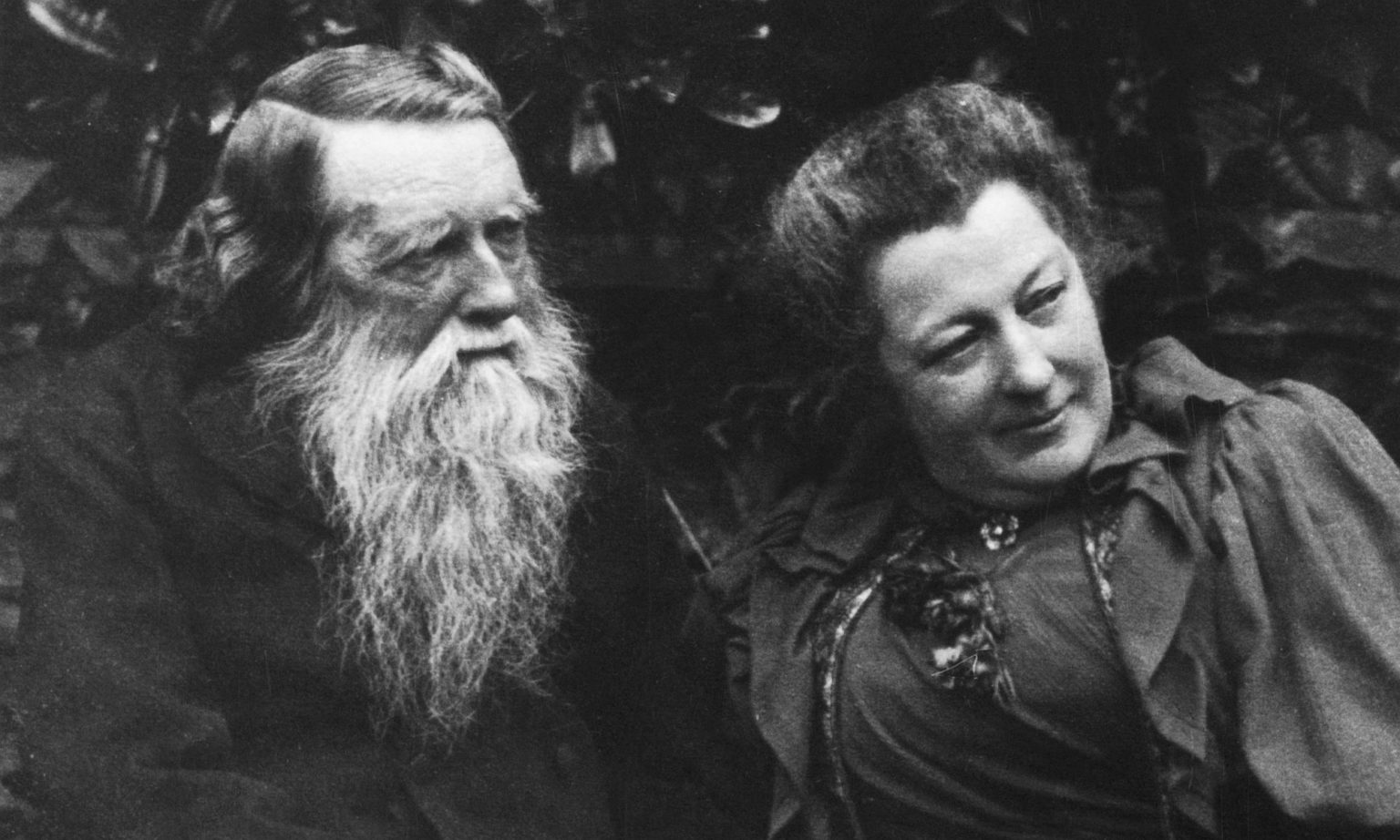
Long-read
In praise of John Ruskin
In the bicentennial of his birth, Ruskin remains out of favour. It’s time to correct that.
Want to read spiked ad-free? Become a spiked supporter.
It’s the year of John Ruskin. 2019 is the bicentennial of his birth and there continues to be events to mark it. Perhaps the celebrations will prove to be a turning point for him.
For though during his lifetime, and for a generation or so afterwards, Ruskin was hugely influential, his achievements have now been neglected for decades. His collected works run to 39 volumes; he wrote around 250 books during his long life. As an author he commanded international respect, attracting praise from figures as varied as Tolstoy, George Eliot, Proust and Ghandi. He was cited as an influence by Clement Atlee and the founders of the National Trust. His ideas helped found the Labour Party and the welfare state. Gladstone wanted to make him poet laureate. Yet most of his books are now out of print. While you might see books about him, you would be lucky to find his work even in secondhand bookshops. Few artists have experienced such a decline in reputation.
There are many factors in this steep descent, both personal and professional, and they began mid-way through Ruskin’s career. Chief among the personal is Ruskin’s failed marriage to Effie Gray, which was annulled on the grounds of impotency. Effie subsequently married Ruskin’s friend, the Pre-Raphaelite artist John Everett Millais, and the scandal at the time was injurious to both parties. The affair is dramatised in Emma Thompson’s 2014 film Effie Gray.
Four years after the annulment, at the age of 39, Ruskin became infatuated with one of his drawing pupils, 10-year-old Rose La Touche. When she was 18 and he 47, he proposed marriage and Rose refused. The situation was complicated because Rose’s mother had designs on Ruskin. Three years later, Rose died – possibly of anorexia – which broke Ruskin’s own vulnerable mental health. There was no suggestion of any impropriety and this second romantic disaster was not as public at the time as his annulled marriage, but both episodes have subsequently got in the way of his work to the degree that he is too neglected by some and completely dismissed by others. His work fell foul of censorious opprobrium 150 years ago, and is doing so again in an age when artists are rarely judged for their work alone.
His work itself hardly courts popularity, either. His style, though elegant, is verbose and rambling, the sentences overly long. He is prone to moralise and preach at readers, and was deemed outmoded in his own time. In his early forties, he discovered social injustice. He confronted the orthodoxy of the day – political economy – describing at length how capitalism is immoral. Sections of the press and the political class set out to destroy him, and if he had not been independently wealthy they would have succeeded. Thankfully they did not, and it is worth remembering what John Ruskin drew, wrote and did mattered then and as it should now.
Ruskin’s earliest published work (aside from a single poem, ‘On Skiddaw and Derwent Water’) appeared in Loudon’s Magazine of Natural History, in the shape of three essays on geology, when he was just 15. As a teenager he compiled a dictionary of minerals and eventually amassed a collection of over 2,000 specimens. Ruskin drew rocks: he saw them as aesthetically pleasing, sensuous and spiritual. He was a theological geologist and one of the first great artists to portray the geological anatomy of landscape.
After studying Classics at the University of Oxford, he made his mark in 1843 with his first volume of Modern Painters: Their Superiority in the Art of Landscape Painting to All the Ancient Masters. It was the contemporary criticism of Turner, who he greatly admired, that prompted him to begin the work. Four more volumes were to be published up to 1860. Ruskin’s premise in volume one was that art should be true to nature and that Turner more than anyone had a detailed understanding of the forces of landscape, light and atmosphere. Ruskin was young and severe, fiercely defensive of Turner, and sure of himself. He established a pulpit style that never left him.
‘There is nothing that I tell you with more eager desire that you should believe… than this, that you never will love art well, till you love what she mirrors better.’
The book won him the support of contemporary intellectuals, particularly among the Royal Academy. After volume one, he began writing about architecture. According to Ruskin, old buildings had a sanctity about them. He was opposed to geometric regularity and he was opposed to restoration, even ascending the scaffolding in Venice to remonstrate with stone-masons. No place was more beloved by Ruskin than Venice. He returned there many times and his finest drawings are of its buildings.
Ruskin’s socialism was paternalistic, idealistic; one opponent described him as a ‘mad governess’
The Seven Lamps of Architecture was published in 1849 and was a critical and popular success, summing up the contemporary Gothic revival. Ruskin’s seven lamps were the demands that he thought architecture should meet: sacrifice, truth, power, beauty, life, memory and obedience. He argued that building innovations since the Industrial Revolution had drained the spirituality from architecture. Between 1851 and 1853 the three volumes of The Stones of Venice were published – a treatise on Venetian art and architecture. In this, he defines the role of the artist and also begins to develop his ideas on social reform, particularly his critique of the increasing division of labour in all things.
‘We want one man to be always thinking, and another to be always working, and we call one a gentleman, and the other an operative; whereas the workman ought often to be thinking, and the thinker often to be working, and both should be gentlemen, in the best sense. As it is, we make both ungentle, the one envying, the other despising, his brother; and the mass of society is made up of morbid thinkers and miserable workers. Now it is only by labour that thought can be made healthy, and only by thought that labour can be made happy, and the two cannot be separated with impunity.’
In 1862, Ruskin took a dramatic shift away from art criticism with Unto This Last. It was the shortest of his books and he believed it to be his best. It is a critique of the fundamentals of 19th-century capitalist economics, and of its impact on people and the natural world:
‘..whereas it has long been known and declared that the poor have no right to the property of the rich, I wish it to be known and declared that the rich have no right to the property of the poor… Mercantile economy signifies the accumulation, in the hands of individuals, of legal or moral claim upon, or power over, the labour of others; every such claim implying precisely as much poverty and debt on one side, as it implies riches or right on the other.’
Ruskin was quickly regarded as dangerous. Much of the political class decided that the correct response was to destroy him. An editorial in the Manchester Examiner and The Times on 2 October 1860 argued: ‘If we do not crush him, his wild words will touch the springs of action in some hearts and before we are aware, a moral floodgate may fly open and drown us all.’
It was as if the pampered aesthete had just discovered the working class and was appalled by what they had to endure. He said that before any employer should consider hiring a child, he should ask himself if he would put his own children to the same work. Ruskin had travelled across the continent but not the backstreets of English cities. At one point he declared himself a communist – but then, his friend Oscar Wilde similarly declared himself a revolutionary socialist, and both were given to posturing. Ruskin’s socialism was paternalistic, idealistic; one opponent described him as a ‘mad governess’.
‘Government and cooperation are in all and eternally the laws of life. Anarchy and competition eternally in all things the laws of death’, Ruskin wrote. ‘There is no wealth but life. Life, including all its powers of love, of joy, and of admiration. That country is the richest which nourishes the greatest number of noble human beings.’
The political economy that Ruskin attacked was the orthodoxy of the day. Socialism was in its infancy as an idea and much of Europe had recently convulsed under the revolutions of 1848. His friends and colleagues abandoned him, with the exception of Thomas Carlyle. The ideas expressed in Unto This Last bled into a series of lectures to ‘the workingmen and labourers of England’ published as pamphlets in the 1870s. Ruskin increasingly took his ideas and his teaching to working people. He taught labourers at the working men’s college in Red Lion Square. He established the Guild of St George with £1,000 of his own money, acquiring land where people could work cooperatively. The guild continues to this day as a charity for arts, crafts and the rural economy.
William Morris said of Ruskin, ‘He seemed to point out a new road on which others should travel’
He had a particular connection to Sheffield, describing the cutlery workers there as the finest metal-workers in the world. He was an advocate for improved education of women, which led to the establishment of the Queenswood Girls School that provided an education that couldn’t be found elsewhere. An Oxford College specifically for workers was named after him and once there were Ruskin Societies everywhere.
The modernist culture after the First World War was no place for Ruskin’s prose, yet there is much in him that we should pay attention to now and beyond his bicentennial year. He looked at the natural world in a way few of us do now. He had an eye for beauty in everything and the skill to translate it. His drawings are unsettling because of their beauty but also because they speak of a craft that has been lost. Religious faith aside, he drew to better understand nature: what made a leaf curl, a crab crawl. In our age of hurry, he invites us to look and wait. When he went to an art gallery, he would look at one painting for hours, go away and write about it and then return. There is a sensuality in his vision, but not of naked flesh – of landscape.
He believed that nature had been created by God for man and that all great art was praise. He spent much of his creative life teaching and encouraging others. He didn’t exhibit his own work – he didn’t think it worthy. It was for others to decide whether to exhibit his work after his death. William Morris said of him, ‘He seemed to point out a new road on which others should travel’. And yet, now, the Effie Gray scandal that wounded him in the 1850s too often makes its way into any contemporary appraisal of Ruskin’s work – and often as a reason for some to condemn or dismiss him altogether. The same old Victorian censoriousness is back in new clothes.
‘Art for arts’ sake’ is not the motto of today’s arts establishment. In both the British and American art worlds, there exists an almost fanatical approach that seeks to police artists, dead or alive, on the debatable grounds of political correctness. Indeed, artists are no longer judged on the artistic merits of their work alone but on the supposed politics of their work – whether it is suitably progressive or otherwise. It’s a new kind of Stalinism. It’s a new philistinism that takes Hylas and the Nymphs off the wall or crosses words out of Huckleberry Finn. The bicentennial events and exhibitions on Ruskin have been terrific. They continue to the end of the year; catch them while you can. But don’t forget him next year, or after that. When we pick up a book or look at a painting, we should more readily judge the fruit and not the tree.
Michael Crowley is an author and dramatist. Visit his website here.
Picture by: Getty Images.
Who funds spiked? You do
We are funded by you. And in this era of cancel culture and advertiser boycotts, we rely on your donations more than ever. Seventy per cent of our revenue comes from our readers’ donations – the vast majority giving just £5 per month. If you make a regular donation – of £5 a month or £50 a year – you can become a and enjoy:
–Ad-free reading
–Exclusive events
–Access to our comments section
It’s the best way to keep spiked going – and growing. Thank you!






Comments
Want to join the conversation?
Only spiked supporters and patrons, who donate regularly to us, can comment on our articles.